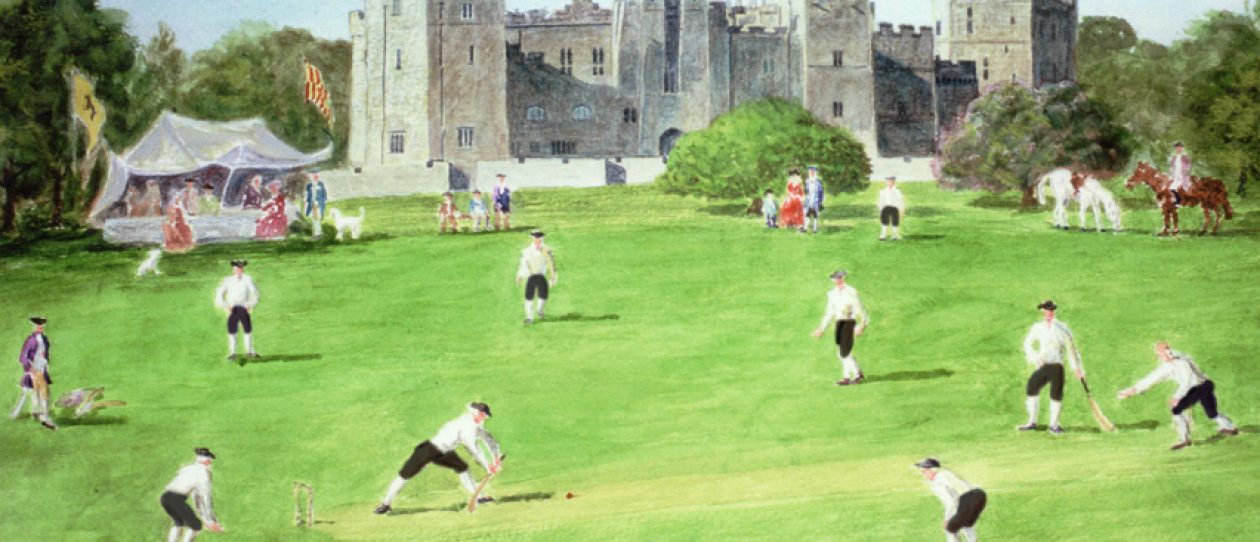Industrial profits soared, coal production increased and Mauretania sailed out of the country’s largest shipbuilding region to win the transatlantic Blue Riband. Yet one in twelve was out of work, pawn shops proliferated and men endured the humiliation of being on ‘the parish’. For all the financial uncertainty club amenities dramatically improved. Townsend noted considerable improvement during three seasons. Tom Hutton (jnr) looked back on 37 summers to elaborate on the difference. “When we played on the old ground there were natural wickets, bowlers had to rely in the main on pace. Since then they have had to cultivate spin.” Hutton made no mention of marl. Introduced at the turn of the century, it was not readily trusted. When North Durham dressed their field with marl in 1912 their opponents refused to play their league match and would only play a friendly.
League cricket changed the landscape like a shattering earthquake. Several new grounds; old ones extended and enclosed. Tea rooms were added to cater for increasing crowds. Re-development cast ambivalent light on the lot of well-to-do and less fortunate. In late summer squalls of seagulls skimmed over half-a-dozen women hand-weeding Ashbrooke. Men on strike or out of work occupied their time improving grounds where generous patrons like J.W.Pease, J.J.E.Backhouse, Sir Charles Furness, Sir Thomas Richardson, Sir Thomas Wrightson and Sir Lindsay Wood supplied the means. The names are a reminder of the contributions from commerce before the forces of democracy and socialism altered the sources of clubs’ revenue.
Three examples need suffice to illustrate the sweat spilled on re-generation. When Consett’s field was required by the ironworks £200 was spent laying out Blackfyne. The ground was enlarged twice in the 1890s and the valley side extended in 1909 by removal of “that objectionable feature, the Bankside”. Consett Iron Company provided a railway and four tubs, South Moor Collieries loaned two iron tip-bogies. They removed 3,750 square yards of clay to level the west side, thereby doubling the width of the ground, and laid 4,000 square yards of turf. The club was rewarded with a county match.
Tom Watson supervised the re-laying of Park Street’s turf at Feethams. Cricket was but one of Tom’s pursuits. He completed a remarkable feat in 1870. Setting off at midnight he scaled Scafell, Helvellyn, Saddleback and Skiddaw, left a soda bottle on each peak to mark the ascent, and sat down to breakfast in his hotel at 9 am. “Nourished by the blood and sinew” of Harry Thompson, Feethams was the best wicket in the north. “Is anyone ever bowled out on this ground?” asked Bobby Peel who took 100 wickets in a season eight times for Yorkshire. By the end of the century eight of the ten highest club totals had been made there. Thompson was mortified to hear Feethams was offered for housing in 1896. Townspeople secured its future by contributing toward the £5,500 purchase. The last mile home proved the longest. Final payment was not made until 1903. Feethams hosted an annual Cricket Festival that immediately followed Scarborough Festival to attract the best English cricketers. Jack Hobbs made 175 in 1911.
W.J. Nimmo, who hit a few hundreds in his day, founded Castle Eden in 1906 on land provided by Nimmo’s brewery. Nimmo engaged Charlie Judson, ex-Sheffield United CC, to lay out a field that sloped six feet from north to south. Judson created a batsman’s paradise, “an Elysian retreat in the Durham coalfield”. Castle Eden scored 325 for 1 in 1908. Hardly a ball passed the bat as Stonehouse (152) and Nicholson (172) added an unbroken 324. Twenty years later Judson’s son, C.J., hit 176 not out during a first wicket partnership of 289 with F.W.Heads (110).
Fortified by liquid assets, Castle Eden had few financial worries. The less fortunate struggled to raise money for equipment and maintenance. Sports meetings remained an valuable source, profits at North Durham rising from £80 to £200 in seven years. Most lucrative were the bazaars organised by lady members now moving toward emancipation. A monster bazaar at Sunderland raised £2,240 over three days. Together with £1,257 from the estate of late president Charles Lilburn it was a massive contribution to Ashbrooke’s £10,000 debt. Other bazaars raised £900 at Darlington, £806 at Stockton and £400 at Chester-le-Street. Blinkered male chauvinists voiced ingratitude. Robert Spence Watson, solicitor and influential educationist, condemned North Durham men for their hostile criticism of ladies who raised funds to lay out their field. Women’s contributions to cricket for too long have been taken for granted, too often unsung. Many clubs owe their very existence to them.
